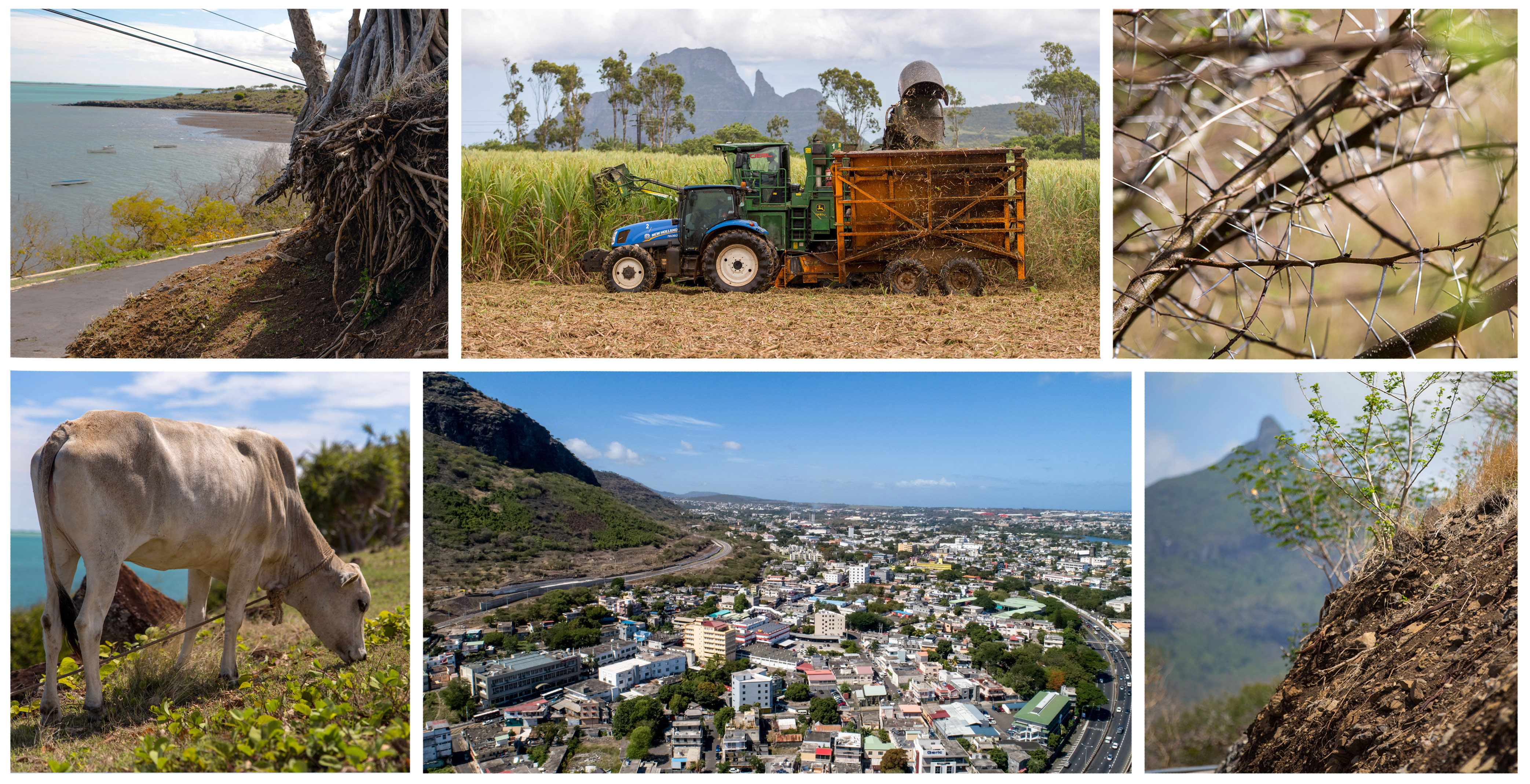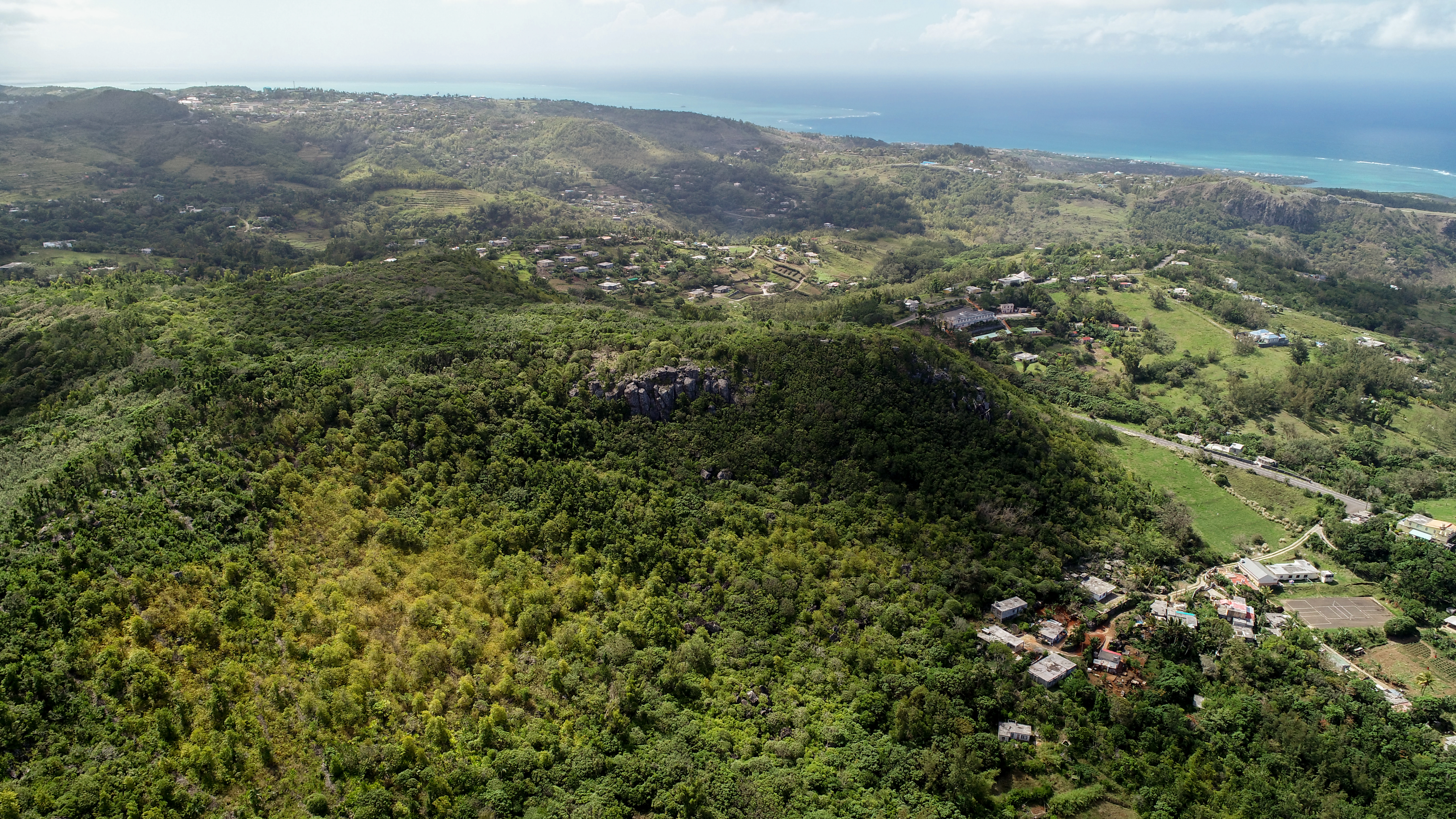What if the COVID-19 pandemic was an opportunity to adopt Land Degradation Neutrality Targets?
Towards Sustainable Land Management in the Republic of Mauritius
July 27, 2020
Agricultural land at the foot of the Moka Range. PHOTO @UNDP Stephane Bellerose
The COVID-19 pandemic has highlighted the vulnerability of both Mauritius and Rodrigues in terms of food security. One immediate response of the population has been a renewed interest in backyard gardening. This presents an excellent opportunity to propel both Mauritius and Rodrigues to adopt the Land Degradation Neutrality Targets of the United Nations Convention to Combat Desertification (UNCCD).
The islands of Mauritius and Rodrigues were once covered in luxurious rainforests and palm savannahs, and rich in endemic biodiversity. The endemic flora and fauna included mammals such as fruit bats; birds such as the Pink Pigeon, the Kestrel, and of course the now extinct Dodo; reptiles such as the giant tortoises and geckos; and plants such as the Pandanus, Black Ebony or the Trochetia Boutoniana. This idyllic state lasted until the first human settlers arrived in the 17th Century. Since then, both islands have undergone drastic and rapid changes in land use. The Forestry Service reports that as of 2014, only 2% of native forests remain in Mauritius.
Deforestation and change in land use have been primarily driven by economic activity. During the colonial era, forests were cleared of their black ebony, a very valuable wood, to make way for cash crops such as sugarcane. More recently, rapid urbanisation coupled with unsustainable agricultural practices and climate change are adding pressure to the land, leading to a loss in soil productivity and resulting in land degradation.
Land degradation is caused mainly by urbanisation and unsustainable land practices.. Photo: @UNDP Stephane Bellerose
The Sustainable Development Goals: A Pathway to Recovery
One of the targets of Sustainable Development Goal 15 (Life on Land), adopted in September 2015, is “to combat desertification; restore degraded land and soil, including land affected by desertification, droughts and floods; and strive to achieve a land degradation-neutral world by 2030”.
In addition, Mauritius ratified the United Nations Convention to Combat Desertification (UNCCD) on 23 January 1996. This convention legally binds environment and development to sustainable land management. Parties to the Convention work together to improve the living conditions for people in drylands; maintain and restore land and soil productivity and mitigate the effects of drought.
Furthermore, the 2018 draft Land Degradation Neutrality Target Setting report identified areas of disaster risk such as landslides; coastal erosion/inundation; the encroachment of mountain and river reserves; open pastures and agricultural land conversion; and expanding road networks, as hotspots for land degradation.
In Rodrigues, the reluctance of the younger generation to take up farming has led to the abandonment of agricultural land; thus, exacerbating land degradation. In addition to the loss of terrestrial biodiversity, the economic impact of land degradation can be felt in several sectors beyond agriculture. For example, land degradation increases the occurrence of soil erosion which, in turn, causes an increase in the sedimentation and siltation of beaches and lagoons with a negative impact on the tourist industry.
Aerial view of the Nature Reserve of Grande Montagne in Rodrigues. PHOTO@UNDP
Finding the right balance
To date, no comprehensive socio-economic study has been carried out to fully quantify the impacts of land degradation loss in Mauritius and Rodrigues. The provisions of the UNCDD offers a pathway to recovery. Land Degradation Neutrality is defined as “the state whereby the amount and quality of land resources, necessary to support ecosystem functions and services and enhance food security, remains stable or increases within specified temporal and spatial scales and ecosystems”.
To achieve such a balanced state, a range of sustainable land management technologies and climate-smart agricultural techniques need to be implemented. These can range from simple measures such as replacing rusted fencing and the introduction of cut and carry method to collect fodder for cattle, to more laborious approaches such as re-afforestation of river reserves with endemic species or the continuous removal of invasive alien species.
The newly approved GEF 6 project on Mainstreaming Sustainable Land Management and Biodiversity Conservation will address the gaps in terms of the need for a socio-economic study to fully quantify the impacts of land degradation in Mauritius and Rodrigues. The project will also pilot SLM technologies to improve soil productivity, thus aiding the country in its COVID-19 response to improve food self-sufficiency.

 Locations
Locations


